Non-fiction
Non-fiction

Settler Colonialism An Introduction
From the Palestinian struggle against Israeli Apartheid, to First Nations' mass campaigns against pipeline construction in North America, Indigenous peoples are at the forefront of some of the crucial struggles of our age. Rich with their unique histories, characteristics, and social relations, they are connected by the shared enemy they face: settler colonialism.
In this introduction, Sai Englert highlights the ways in which it has, and continues to shape our global economic and political order. From the rapacious accumulation of resources, land, and labour, through Indigenous dispossession and genocide, to the development of racism as a form of social control, settler colonialism is deeply connected to many of the social ills we continue to face today.
To understand settler colonialism as an ongoing process, is therefore also to start engaging with contemporary social movements and solidarity campaigns differently. It is to start seeing how distinct struggles for justice and liberation are intertwined.

Extraterrestrial Languages
If we send a message into space, will extraterrestrial beings receive it? Will they understand?
The endlessly fascinating question of whether we are alone in the universe has always been accompanied by another, more complicated one: if there is extraterrestrial life, how would we communicate with it? In this book, Daniel Oberhaus leads readers on a quest for extraterrestrial communication. Exploring Earthlings' various attempts to reach out to non-Earthlings over the centuries, he poses some not entirely answerable questions: If we send a message into space, will extraterrestrial beings receive it? Will they understand? What languages will they (and we) speak? Is there not only a universal grammar (as Noam Chomsky has posited), but also a grammar of the universe?
Oberhaus describes, among other things, a late-nineteenth-century idea to communicate with Martians via Morse code and mirrors; the emergence in the twentieth century of SETI (the search for extraterrestrial intelligence), CETI (communication with extraterrestrial intelligence), and finally METI (messaging extraterrestrial intelligence); the one-way space voyage of Ella, an artificial intelligence agent that can play cards, tell fortunes, and recite poetry; and the launching of a theremin concert for aliens. He considers media used in attempts at extraterrestrial communication, from microwave systems to plaques on spacecrafts to formal logic, and discusses attempts to formulate a language for our message, including the Astraglossa and two generations of Lincos (lingua cosmica).
The chosen medium for interstellar communication reveals much about the technological sophistication of the civilization that sends it, Oberhaus observes, but even more interesting is the information embedded in the message itself. In Extraterrestrial Languages, he considers how philosophy, linguistics, mathematics, science, and art have informed the design or limited the effectiveness of our interstellar messaging.
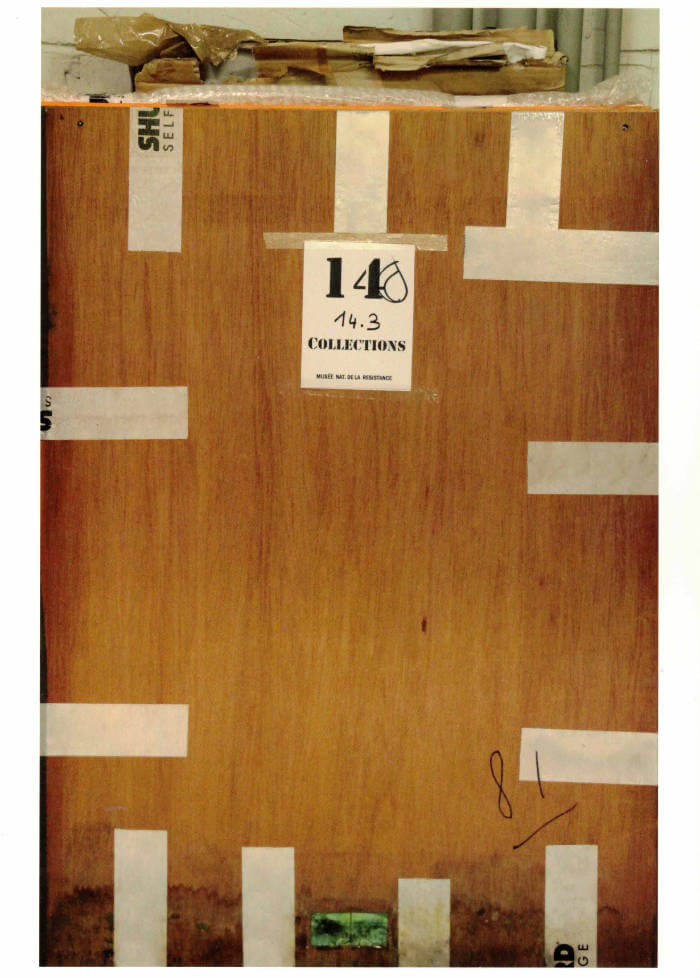
À Reclasser
This publication shows the waiting archive of the Museum of Resistance. The Brussels Museum of Resistance is undergoing renovation. Hidden in the basements of the civil affairs department, the stacked archive awaits a new home. Boxes filled with recognition files, photo albums, exhibition panels, books, flags, furniture, and other scenographic materials are scattered throughout the entire floor plan. The recently appointed archivist Samuel and historian Agnes are sorting through the archive pieces and are striving to ensure a future.
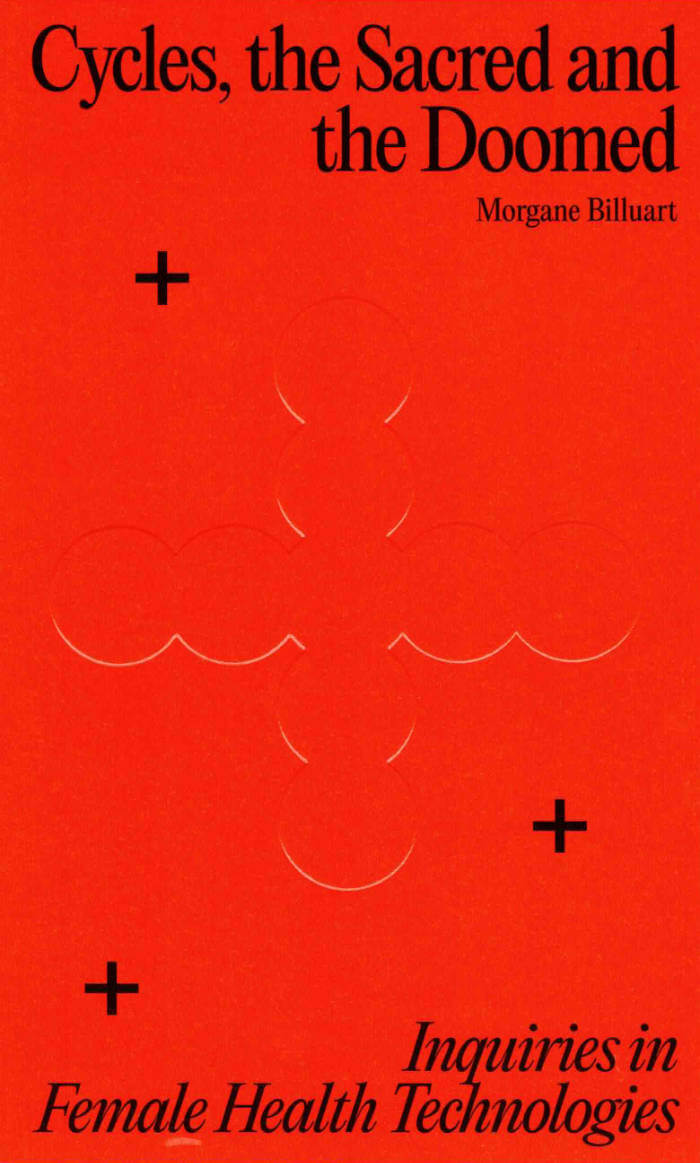
Cycles, the Sacred and the Doomed
In a world propelled by swift technological progress and perpetual obsolescence, women frequently find themselves adapting and altering their daily experiences in order to remain functional. In the 21st century, as technology purports to comprehensively assess and address women’s conditions and physical discomfort, Cycles, the Sacred and the Doomed delves deeply into the realm of female health technologies, revealing a space where science, holistic methods, and mythology converge. This book challenges the idea of combining ancient wisdom with modern innovation and takes readers on a multidisciplinary journey to explore the intricacies of female’s health.
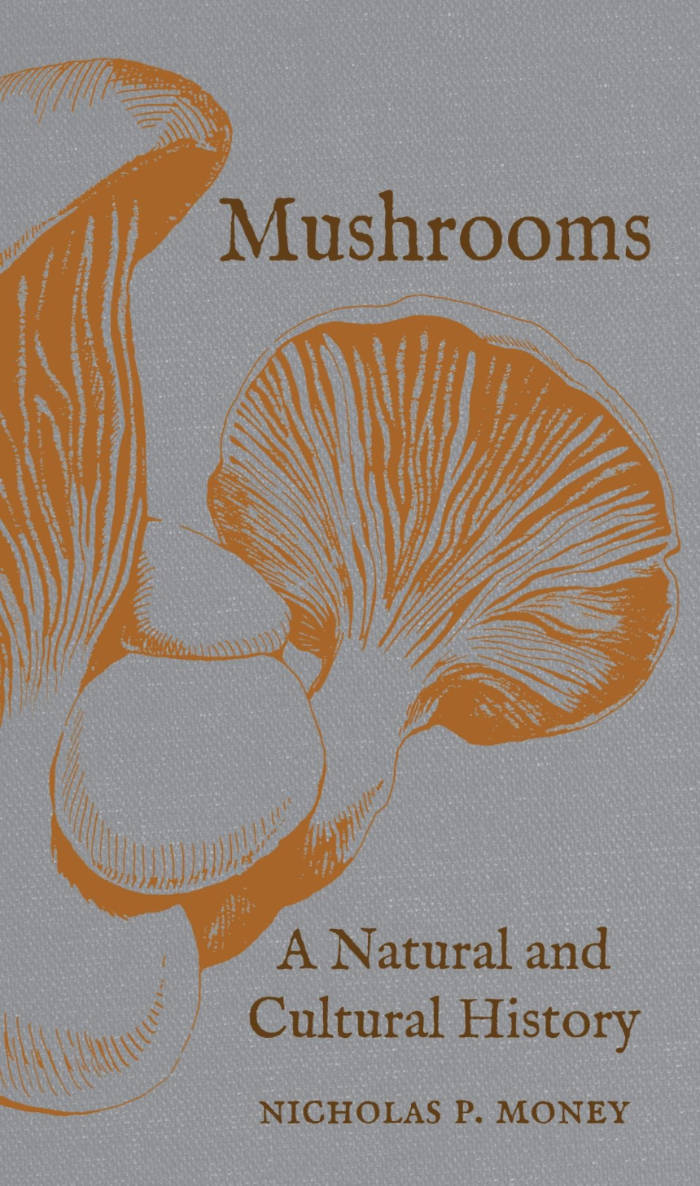
Mushrooms: A Natural and Cultural History
Mushrooms hold a peculiar place in our culture: we love them and despise them, fear them and misunderstand them. They can be downright delicious or deadly poisonous, cute as buttons, or utterly grotesque. These strange organisms hold great symbolism in our myths and legends. In this book, Nicholas P. Money tells the utterly fascinating story of mushrooms and the ways we have interacted with these fungi throughout history. Whether they have populated the landscapes of fairytales, lent splendid umami to our dishes, or steered us into deep hallucinations, mushrooms have affected humanity from the earliest beginnings of our species.
As Money explains, mushrooms are not self-contained organisms like animals and plants. Rather, they are the fruiting bodies of large—sometimes extremely large—colonies of mycelial threads that spread underground and permeate rotting vegetation. Because these colonies decompose organic matter, they are of extraordinary ecological value and have a huge effect on the health of the environment. From sustaining plant growth and spinning the carbon cycle to causing hay fever and affecting the weather, mushrooms affect just about everything we do. Money tells the stories of the eccentric pioneers of mycology, delights in culinary powerhouses like porcini and morels, and considers the value of medicinal mushrooms. This book takes us on a tour of the cultural and scientific importance of mushrooms, from the enchanted forests of folklore to the role of these fungi in sustaining life on earth.

Russian Colonialism 101
For years, Ukrainian journalist Maksym Eristavi has been mainstreaming the global awareness about the legacy of Russian colonialism. A few days before Russia launched a full-scale invasion of Ukraine, he started a Twitter thread listing all Russian colonial invasions over the last century and highlighting one specific pattern that they all went by. The post has gone viral and is now dubbed the "mother of all Russian colonialism tweets". Together with a group of Ukrainian artists, Eristavi transformed it into an illustrated pocket guide to the 48 most recent invasions of Russian colonialism — to bring everyone’s attention to a pattern of serial behavior by the largest colonial empire.
Publication is prepared with the support of the MOCA NGO and the Ukrainian Emergency Art Fund in collaboration with the Sigrid Rausing Trust. Some illustrations created during the illustrative workshop for the book Russian Colonialism 101 have been donated to the Ukrainian Museum of Contemporary Art (UMCA).

Histoire de la séparation
Pour les révolutionnaires des deux derniers siècles, l’accumulation du capital devait unifier la classe ouvrière sous la bannière du sujet révolutionnaire. Le mouvement ainsi né était appelé à renverser la société de classes et les clivages divisant les prolétaires. Mais le mouvement de la valeur a finalement triomphé, pour donner naissance à la société de la séparation. L’atomisation a pris le pas sur les puissances du rassemblement. La civilisation du capital traverse aujourd’hui une crise sans fin, mais les forces capables de la défaire brillent par leur absence.
Ces textes tirés de la revue Endnotes, réunis pour la première fois en français, dessinent la carte d’un présent ponctué de paysages désindustrialisés, de centres logistiques et de bidonvilles où s’entassent les populations rejetées aux marges de l’accumulation – autant de coordonnées nécessaires pour continuer à penser le dépassement du capitalisme : une fois encore, reprendre le chantier de l’hypothèse communiste.
Endnotes est une revue théorique communiste produite par un groupe de discussion du même nom basé en Grande-Bretagne et aux États-Unis.
Traduction: Pablo Arnaud
Préface: Aaron Benanav Et John Clegg

Heroines, New Edition
A manifesto reclaiming the wives and mistresses of literary modernism that inspired a generation of writers and scholars, reissued after more than a decade.
On the last day of December 2009, Kate Zambreno, then an unpublished writer, began a blog called "Frances Farmer Is My Sister," arising from her obsession with literary modernism and her recent transplantation to Akron, Ohio, where her partner held a university job. Widely reposted, Zambreno's blog became an outlet for her highly informed and passionate rants and melancholy portraits of the fates of the modernist “wives and mistresses," reclaiming the traditionally pathologized biographies of Vivienne Eliot, Jane Bowles, Jean Rhys, and Zelda Fitzgerald: writers and artists themselves who served as male writers' muses only to end their lives silenced, erased, and institutionalized. Over the course of two years, Frances Farmer Is My Sister helped create a community of writers and devised a new feminist discourse of writing in the margins and developing an alternative canon.
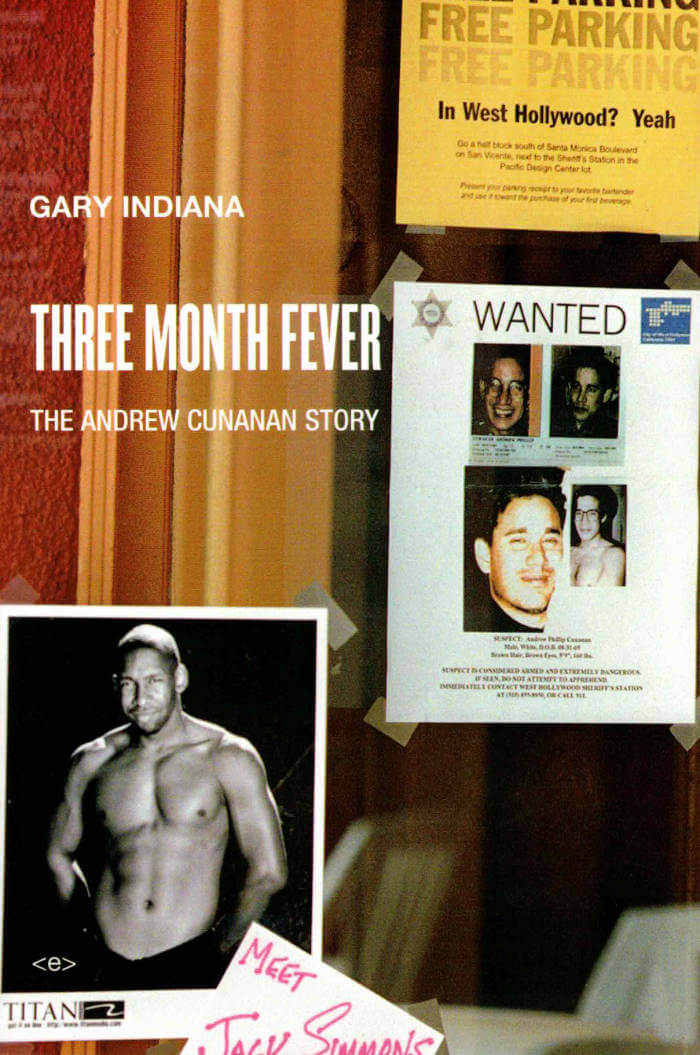
Three Month Fever: The Andrew Cunanan Story
A sardonic and artful reconstruction of the brief life of the party boy who became a media sensation for shooting Gianni Versace.
First published in 1999, Gary Indiana's Three Month Fever is the second volume of his famed crime trilogy, now being republished by Semiotext(e). (The first, Resentment, reissued in 2015, was set in a Menendez trial-era L.A.) In this brilliant and gripping hybrid of narrative and reflection, Indiana considers the way the media's hypercoverage transformed Andrew Cunanan's life “from the somewhat poignant and depressing but fairly ordinary thing it was into a narrative overripe with tabloid evil.”
“America loves a successful sociopath,” Indiana explains. This sardonic and artful reconstruction of the brief life of the party boy who became a media sensation for shooting Gianni Versace is a spellbinding fusion of journalism, social commentary, and novelistic projection. By following Cunanan's notorious “trail of death,” Indiana creates a compelling portrait of a brilliant, charismatic young man whose pathological lies made him feel more like other people—and more interesting than he actually was. Born in a working-class exurb of San Diego and educated at an elite private school, Cunanan strove to “blend in” with the upscale gay male scene in La Jolla. He ended up crazed and alone, eventually embarking on a three-month killing spree that took the lives of five men, including that of Versace, before killing himself in a Miami boathouse, leaving behind a range of unanswerable questions and unsolvable mysteries.
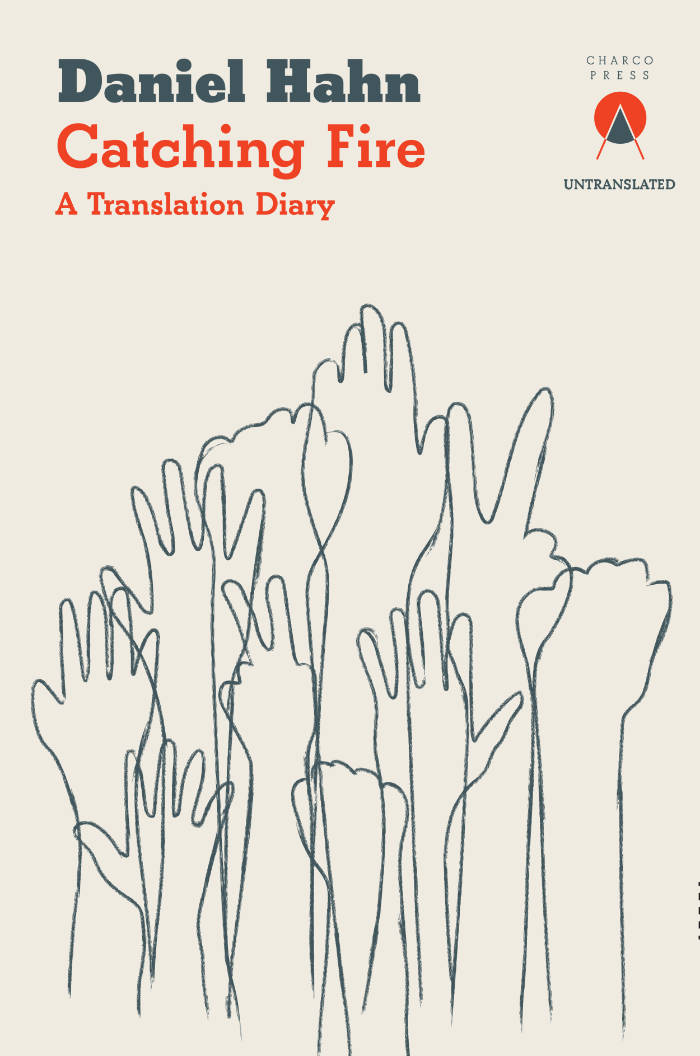
Catching Fire
In Catching Fire, the translation of Diamela Eltit's Never Did the Fire unfolds in real time as a conversation between works of art, illuminating both in the process. The problems and pleasures of conveying literature into another language—what happens when you meet a pun? a double entendre?—are met by translator Daniel Hahn's humour, deftness, and deep appreciation for what sets Eltit's work apart, and his evolving understanding of what this particular novel is trying to do.
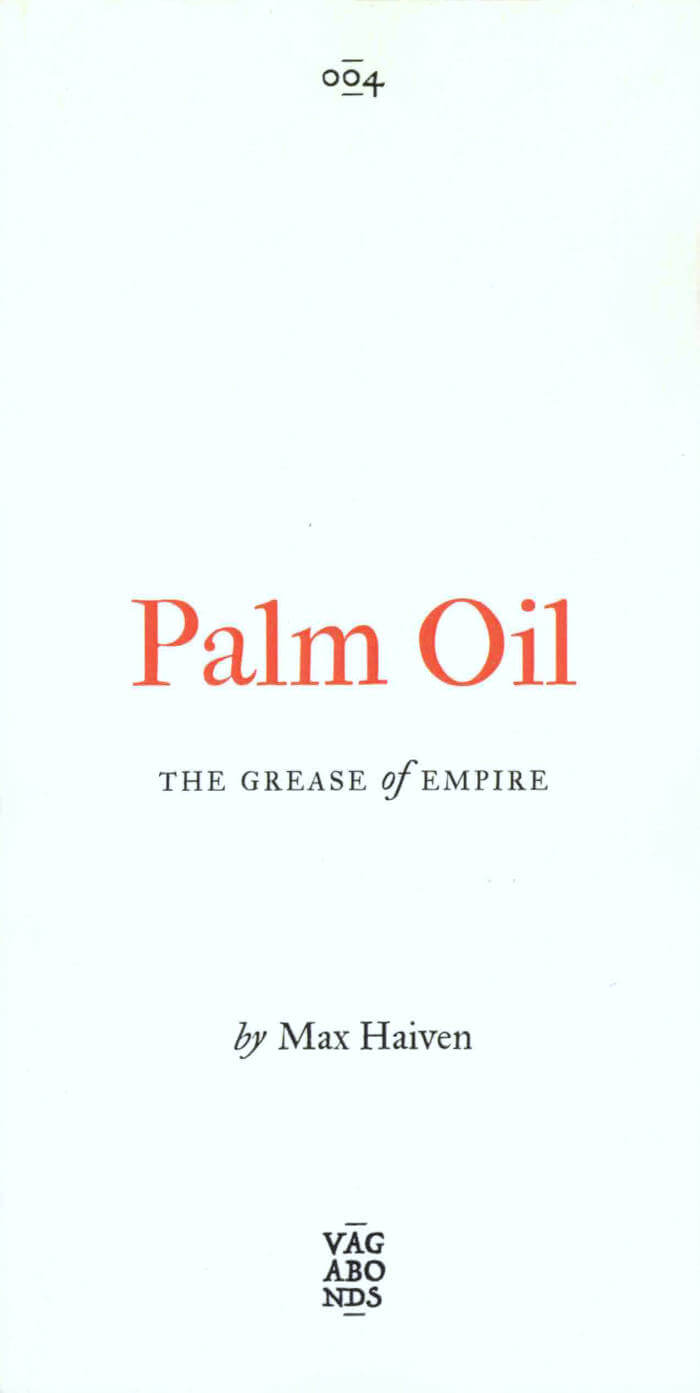
Palm Oil: The Grease of Empire
It's in our food, our cosmetics, our fuel and our bodies. Palm oil, found in half of supermarket products, has shaped our world. Max Haiven uncovers how the gears of capitalism are literally and metaphorically lubricated by this ubiquitous elixir.
From its origins in West Africa to today's Southeast Asian palm oil superpowers, Haiven's sweeping, experimental narrative takes us on a global journey that includes looted treasures, the American system of mass incarceration, the history of modern art and the industrialisation of war. Beyond simply calling for more consumer boycotts, he argues for recognising in palm oil humanity's profound potential to shape our world beyond racial capitalism and neo-colonial dispossession.
One part history, one part dream, one part theory, one part montage, this kaleidoscopic and urgent book asks us to recognise the past in the present and to seize the power to make a better world.

The (Fair) Kin Arts Almanac
The Fair Kin Arts Almanac is made with the voices of more than 130 artists, writers, and activists spinning their thoughts and experiences into 12 chapters around a year. Surprising perspectives, recipes, sound practices, and reflections around ecology, parenthood, the need to rest in a life that never stops, the urgency for space and infrastructure for artists, redistribution of resources, accessibility of the sector, artistic involvement in politics and much more.
The FAIR KIN ARTS ALMANAC is a circular book, filled with perspectives, recipes, astrological wisdom, ideas, games, proposals and in depth reflections around topics of social political relevance. For the Arts and beyond.
The book was edited by a team of 13 editors that in turn each worked with artists, art workers, writers and academics. Chapters range from politics, making space, education, parenthood, accessibility, ecology, mutuality, rest, migration, redistribution, property & open source and relationality.

A Toast to St Martirià
A Toast to St Martirià is an improvised speech given by the cult Catalan filmmaker Albert Serra at the St Martirià fiesta in Banyoles, the town of his birth. Transmitting his subversive attitude and impulsive lust for life, it is a journey through his formative years and early relationships – established in the nightlife of his hometown – that have shaped his particular conception of cinema, art and life. ‘Cinema should be this, making perception of time and space more intense.’
Translated by Matthew Tree
Afterword by Alexander García Düttmann
The Catalan artist and filmmaker Albert Serra was born in 1975. His films usually depict European myths and literature. In 2001, he co-founded the production company Andergraun Films. His Honor of the Knights was selected by Cahiers du Cinéma as one of the ten best films of 2007. For Story of My Death, Serra was awarded the Golden Leopard at the Locarno Film Festival in 2013. For The Death of Louis XIV, Serra received the Prix Jean Vigo in 2016. Pacifiction was nominated for the Palme d’Or at the Cannes Film Festival in 2022.
Matthew Tree was born in London in 1958. He taught himself Catalan in 1979 and moved to Catalonia in 1984. Since then he has published nine works of fiction and non-fiction written in Catalan, and five written in English. He writes regular columns for Catalonia Today magazine in English and El Punt Avui newspaper in Catalan. He has translated works by Jordi Puntí, Maria Barbal, Monika Zgustová, Joel Joan, Marta Marín-Dòmine and Albert Serra, among others. Two of his English novels, Just Looking and Almost Everything, will appear in Catalan translation at the start of 2025.
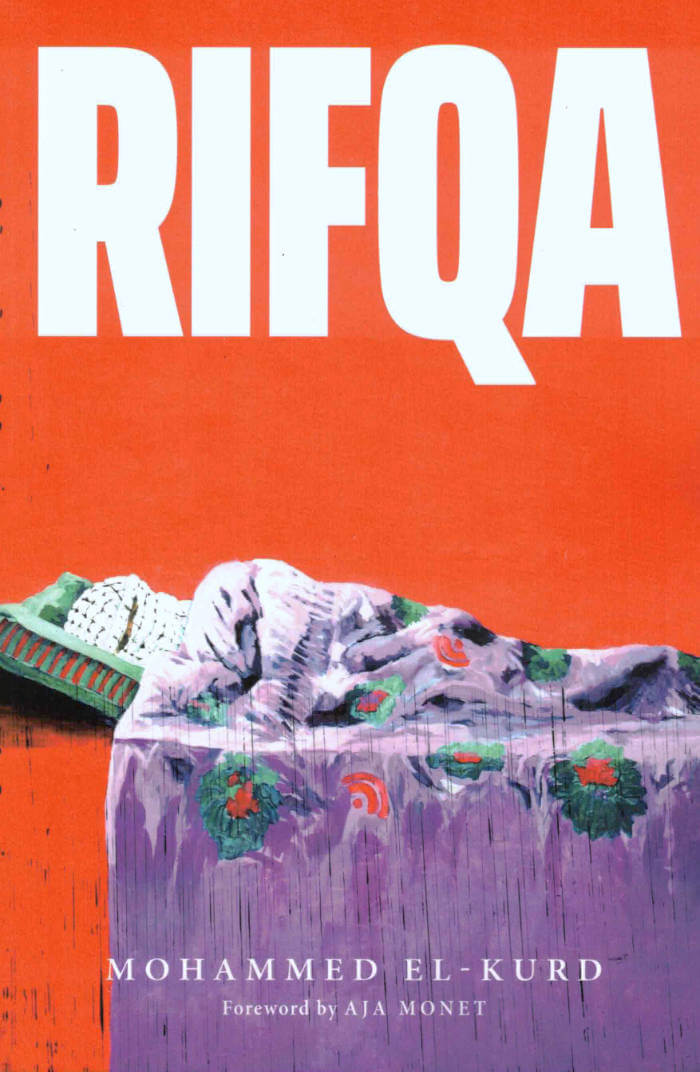
Rifqa
Rifqa is Mohammed El-Kurd’s debut collection of poetry, written in the tradition of Ghassan Kanfani’s Palestinian Resistance Literature. The book narrates the author’s own experience of dispossession in Sheikh Jarrah—an infamous neighborhood in Jerusalem, Palestine, whose population of refugees continues to live on the brink of homelessness at the hands of the Israeli government and US-based settler organizations. The book, named after the author’s late grandmother who was forced to flee from Haifa upon the genocidal establishment of Israel, makes the observation that home takeovers and demolitions across historical Palestine are not reminiscent of 1948 Nakba, but are in fact a continuation of it: a legalized, ideologically-driven practice of ethnic cleansing.
Mohammed El-Kurd is a Palestinian writer and poet from Sheikh Jarrah in East Jerusalem. He was pursuing a Master's in the United States before returning to Sheikh Jarrah to protest the ethnic cleansing of his family. He has gained prominence for his description of Israeli occupation as apartheid and settler colonialism.

Oral History of Exhibitions
Of course there is the practice of art by the artist, but an exhibition is even more so an engagement between people, places, institutions, projections, desires, coincidences, memories, and temporalities. In this monograph, artist Megan Francis Sullivan chooses the format of oral history, engaging various akteurs of the field to produce a web of language reflecting a shape of time.
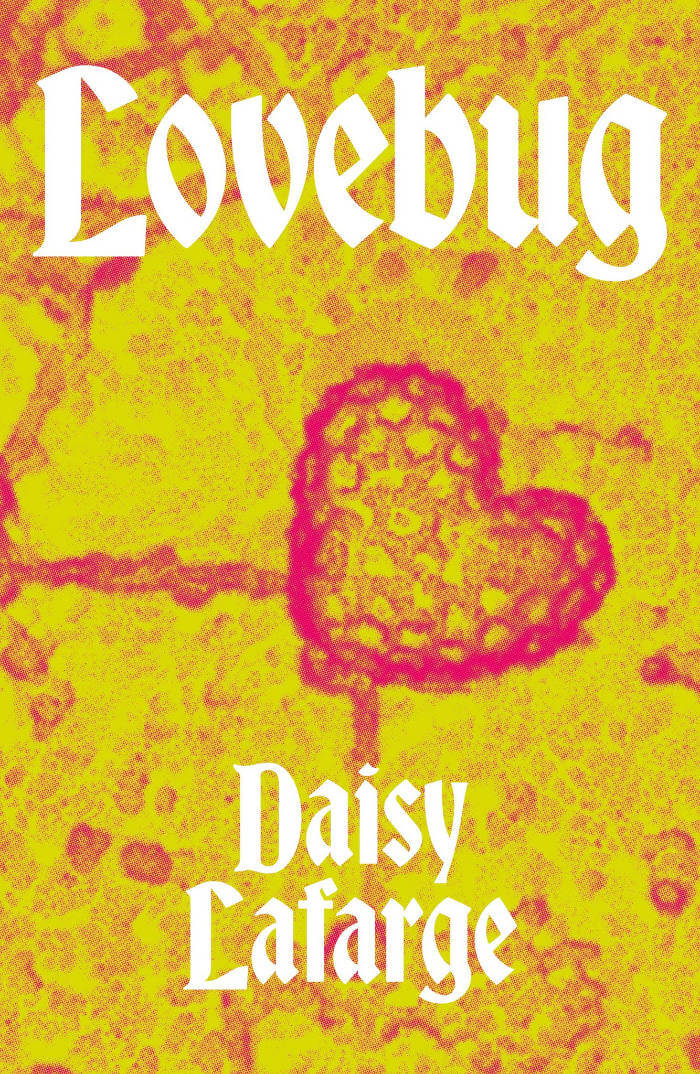
Lovebug
In Lovebug, Daisy Lafarge explores metaphors of love and disease as she seeks to understand human vulnerability and our intimacy with microbial life.
Turning to microbiology, mysticism, and psychoanalysis – as well as the raw materials of love and life – Lafarge navigates the uncomfortable intimacy between the human body and the many bacteria, viruses, and parasites to which it is host.
Lovebug is a book about the poetics of infection, and about how we can learn to live with multispecies ambivalence. How might we forge non-phobic relationships to our ‘little beasts’? How might we rewild our imaginations? In weaving the personal with the pathological, Lovebug complicates the idea of coherent selfhood, revealing life as a site of radical vulnerability and an ongoing negotiation with limit.
"The pathogen arrives anyway and takes a seat at the table. Conditioned to welcome damage, I am curious about this uninvited guest. You must sit down, says Love, and taste my meat".
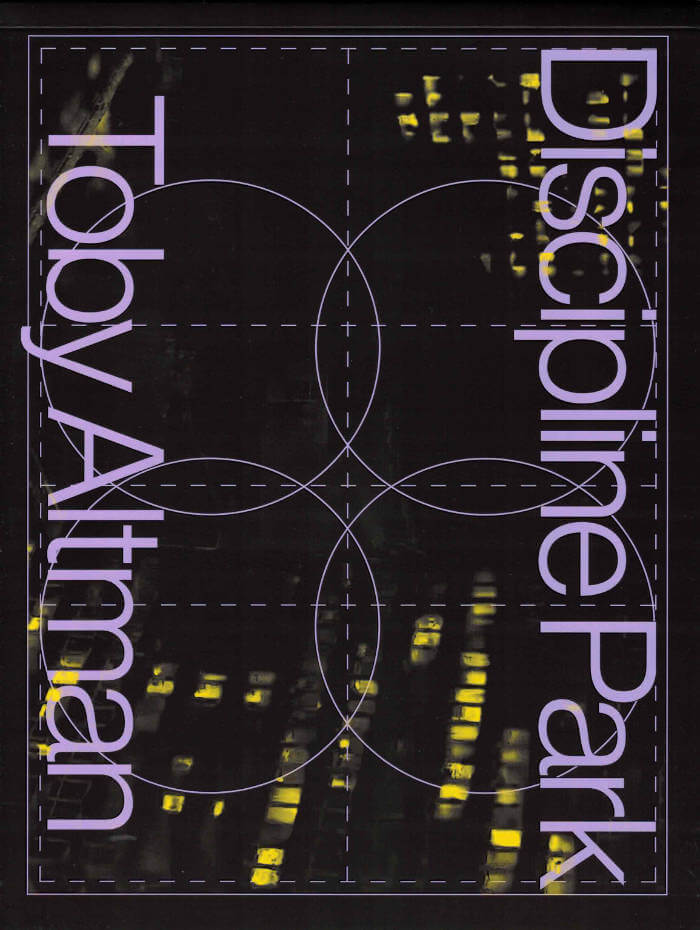
Discipline Park
Toby Altman’s Discipline Park documents the demolition of Prentice Women's Hospital in Chicago, a landmark of architectural brutalism designed by Bertrand Goldberg in the 1970s. Altman was born in the building, and years later, was employed by Northwestern University when they tore it down. His personal proximity to the site leads to a wider critical evaluation of the cruelty of a neoliberalism that asks us to draw sustenance from the very institutions that poison and erase our bodies, habitats, and histories. But, as it indicts the present and its claustrophobic, ruinous politics, Discipline Park also recovers or reinvents utopian vistas through an extended engagement with Goldberg's architectural practices.
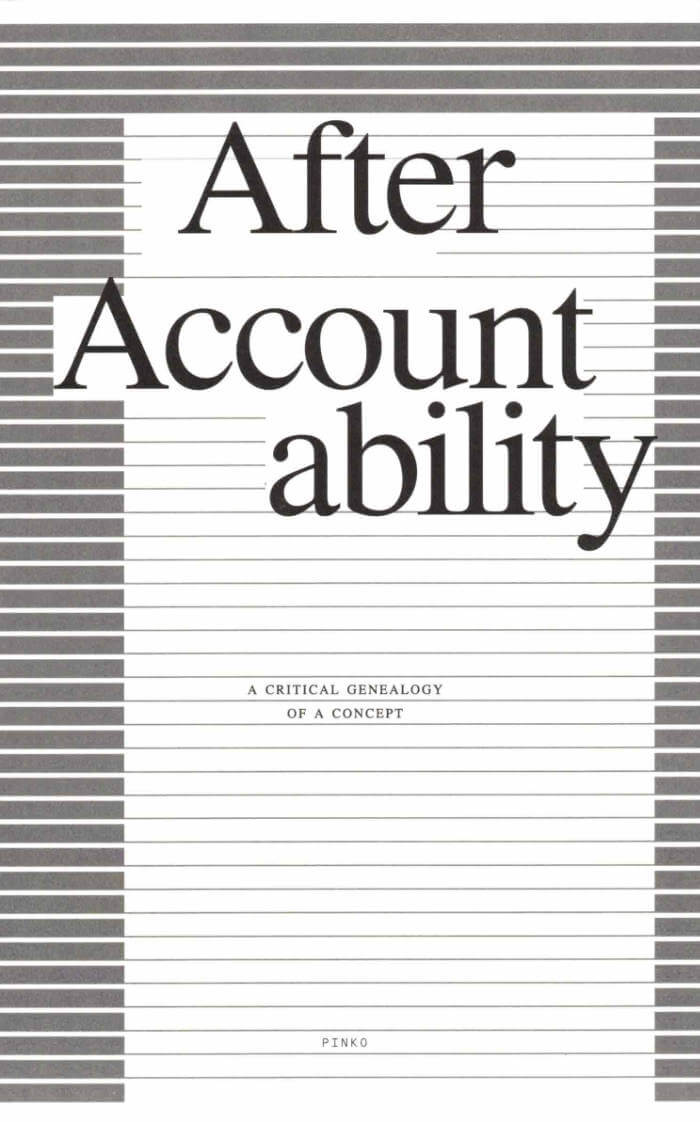
After Accountability
A concept just short of a program, accountability has been taken up as a core principle within leftist organizing and activity over the past quarter century. While it invokes a particular vocabulary and set of procedures, it has also come to describe a more expansive, if often vague, approach to addressing harm within movement work. The term’s sudden, widespread adoption as abolitionist concepts began to circulate broadly in recent years cast light on certain shifts in its meaning, renewing the urgency of understanding its relation to militant history and practice.
After Accountability is an oral history and critical genealogy of this decisive movement concept that gathers interviews with eight transformative justice practitioners, socialist labor organizers, incarcerated abolitionists, and activists on the left conducted by members of the Pinko collective. An investigation into the theoretical foundations and current practice of accountability, this volume explores the term’s potential and limits, discovering in it traces of the past half-century’s struggles over the absence of community and the form revolutionary activity should take.
Pinko is a collective for thinking gay communism together. Pinko publishes a biannual print issue and periodic zines, and hosts irregular essays, translations, and archival material on their website.

Solidarity Must Be Defended
Eszter Szakács, Naeem Mohaiemen
The anthology Solidarity Must Be Defended brings together projects on gestures and alignments within the visual arts around transnational solidarity during the Cold War. In dialogue with, among others, the quietist tendencies of non-alignment and the radical vector of liberation movements, the book looks at both grand initiatives and tragic misfires from an entangled, decolonizing world. The point of departure for this anthology is a special issue of Mezosfera magazine (“Refractions of Socialist Solidarity”) edited in Budapest by Szakács in dialogue with Mohaiemen’s three-channel film Two Meetings and a Funeral (2017). This anthology proposes that transnational solidarity is always worth celebrating, but also extremely difficult to inhabit.

Les Éditions des mondes à faire
« Du fric ou on vous tue ! »
« Du fric ou on vous tue ! : j’ignore qui avait pu écrire ça sur un mur, au début des années 1980, à Marseille, mais j’avais bien aimé cette menace de braqueur qui résonnait là comme une injonction plus générale à ceux qui tiennent les cordons de la Bourse. »
Une association de hors-la-loi révolutionnaires, ainsi pourrait-on qualifier le groupe Os Cangaceiros, qui prit ce nom en hommage aux bandits du Nordeste brésilien. Ce livre raconte l’histoire de cette bande de jeunes qui, refusant d’aller travailler, s’était organisée pour arnaquer les banques et prêter main-forte aux luttes qui secouaient alors les prisons, les usines et les banlieues.
Ce récit de première main peut être lu comme une contre-histoire de la décennie 1980, durant laquelle se mit en place le régime de gouvernance que nous subissons depuis.
Alèssi Dell’Umbria est l’auteur de : Histoire universelle de Marseille. De l’an mil à l’an deux mille (Agone, 2006) ; C’est de la racaille ? Eh bien, j’en suis ! À propos de la révolte de l’automne 2005 (L’Échappée, 2006) (réédité et augmenté sous le titre La Rage et la Révolte en 2010 par Agone) ; Échos du Mexique indien et rebelle(Rue des cascades, 2010) ; R.I.P. Jacques Mesrine (Pepitas de calabaza, 2011) ;Tarantella ! Possession et dépossession dans l’ex-royaume de Naples (L’œil d’or, 2016) ; Istmeño, le vent de la révolte. Chronique d’une lutte indigène contre l’industrie éolienne, Livre-DVD (Collectif des métiers de l’édition / Les éditions du bout de la ville, 2018) ; Antimatrix (La Tempête, 2021).

Guerre Sonore
Le sonore excède nos capacités de pensée, il traverse toutes les échelles de la réalité et de la vie sociale, et nous permet d’expérimenter par avance les menaces du futur proche : ce sont les hypothèses que déploie dans sa Guerre sonore le DJ, producteur de bass music et théoricien Steve Goodman, mieux connu sous le pseudo Kode9, et formé au sein de l’Unité de Recherché sur la Cyberculture (CCRU) aux côtés de Kodwo Eshun et Mark Fisher. Guidé par les leçons des sound-systems et des raves, défiant le partage entre philosophie et science-fiction, il compose avec ce livre une vaste fresque fractale, qui analyse les limites de l’audible et les puissances sensorielles et spéculatives de la vibration. Guerre sonore décrit comment la maîtrise des infrabasses et l’occupation de l’espace sensoriel sont devenus l’enjeu d’une bataille secrète mais généralisée où les gouvernements, les spécialistes du marketing, les designers et les technoscientifiques s’affrontent au matérialisme des basses fréquences des artistes et des populations.
Steve Goodman (alias Kode9) est un musicien, écrivain et artiste. Il est l’auteur du livre Guerre Sonore et il codirigé les ouvrages Unsound : Undead (Urbanomic Press, 2019) et Ø (Flatlines Press, 2021). Il a fondé les labels Hyperdub et Flatlines, produit 5 albums, dont deux avec le regretté Spaceape (Memories of the Future, 2006 et Black Sun, 2012) et 3 en solo (Nothing, 2015, Escapology, 2022, Astro-Darien, 2022), de nombreuses compilations de mix DJ ; il a co-compilé et remixé Diggin in the Carts (2018), une collection de musiques rares de jeux vidéo japonais. Il a aussi, entre autres choses, conçu des installations sonores pour la Hyundai Commission à la Tate Modern en 2018 et pour l’exposition sur l’intelligence artificielle More than Human en 2019, au Barbican de Londres.

Telling the Truth as It Comes Up: Selected Talks & Essays 1991-2018
An Expert Array of Talks & Essays by One of Our Greatest Living Poets.
One of our greatest living poets, Alice Notley, the author of more than 40 books of poetry, has delivered an expert array of talks and essays over the last three decades.
The publication offers a significant contribution to literature, reimagining the possibilities of writing in our time and the complicated business of how and why writers devote their lives to their craft. Whether she is writing about other poets—Ed Dorn, Allen Ginsberg, Homer, bpNichol, Douglas Oliver, or William Carlos Williams—noir fiction, the First Gulf War, dreams and what they're for, or giving us insight into her own work, Notley's observations are original, sobering, and always memorable. This collection often eschews the typical style of essay or lecture, resisting any categorization, and is consciously disobedient to academic structures in form. The results are thrilling new modes of thinking that may change the ways we read and write.

In Part: Writings by Julie Ault
Spanning more than three decades, In Part brings together a full spectrum of the New York-based artist, writer and activist Julie Ault's (born 1957) published texts through carefully selected extracts in a single volume.
Reprinted in chronological sequence alongside a selection of full-length texts, this series of excerpts offers a timeline of Ault's continuous artistic growth, longstanding political concerns and dynamic interpersonal affinities.
Beginning in the 1980s with texts written with her collaborators in Group Material, In Part highlights Ault's shift from exhibition making in the mid-1990s to include publishing and writing. Ault's dialogic practice extends to the present day through her sustained engagements and relationships with such artists as Corita Kent, Felix Gonzalez-Torres, Nancy Spero, Martin Beck, David Wojnarowicz, Liberace and Martin Wong.
Lucy R. Lippard contributes an introduction.

Commons in Design
The scarcity of resources, climate change, and the digitalization of everyday life are fuelling the economy of swapping, sharing, and lending—all of which are in some way linked to a culture of commoning. In this context, we understand commons as community-based processes that use, collectively manage, and organize generally accessible resources—referring to both goods and knowledge.
Commons in Design explores the meaning and impact of commons—especially knowledge-based peer commons—and acts of commoning in design. It discusses networked, participatory, and open procedures based on the commons and commoning, testing models that negotiate the use of commons within design processes. In doing so, it critically engages with questions regarding designers’ positionings, everyday practices, self-understandings, ways of working, and approaches to education.
Contributors: Rachel Armstrong, Errantry Media Lab (Max Stearns & Nathalie Attallah), Yuhe Ge, Juan Gomez, Luis Guerra, Katherin Gutiérrez Herrera, Cyrus Khalatbari, Rilla Khaled, Cindy Kohtala, Torange Khonsari, Álvaro Mercado Jara, Nan O’Sullivan, Victoria Paeva, Sharon Prendeville, Zoe Romano, Gregoire Rousseau, Daniela Salgado Cofré, Christine Schranz, Elpitha Tsoutsounakis, Eva Verhoeven, Jennifer Whitty